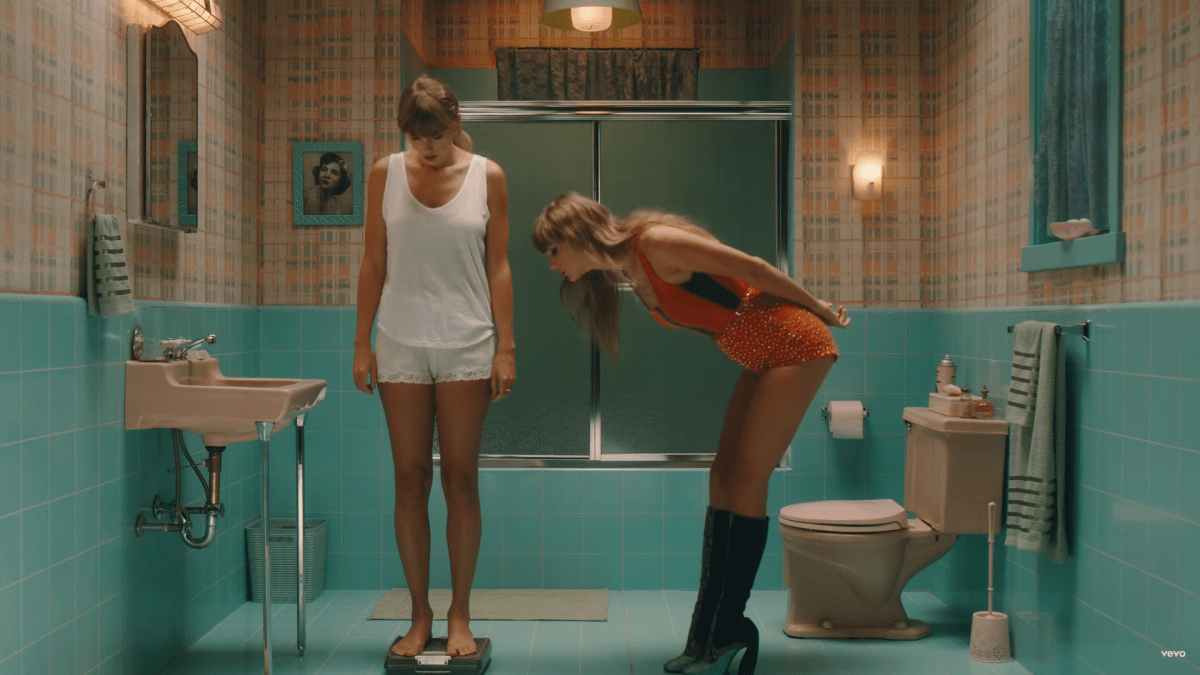Taylor Swift’s tenth studio album Midnights came out on Oct. 21, 2022, breaking records and earning praise from fans and critics. The next morning, she unveiled the music video for first single “Anti-Hero,” a track that delves into her insecurities and mental struggles — and deeply resonates with those who loved “this is me trying,” from folklore (2020).
The music video, directed by Taylor herself, is a satirical visual representation of the lyrics, with several different versions of her constantly sabotaging and putting her down. That is when the fatphobia allegations came in.
In the 2020 Netflix-exclusive documentary Miss Americana, Taylor openly discussed her eating disorder for the first time. Around the 1989 era, in her early to mid-twenties, she would simply stop eating and exercise a lot after seeing herself in pictures. She barely drank any water, so as to not look “bloated.” It came to a point where did not have the energy for concerts anymore and constantly felt like she was about to faint. All to fit the beauty standards she believed she needed to fit.
Though she is considered a regular thin woman by all standards, Taylor is not naturally a size zero, which is likely the main factor that triggered the eating disorder. And that is what she meant to portray in the “Anti-Hero” music video: a dark side of herself calling her “fat” as if that was a slur, which it should not be.
But without context, the public, fans and general viewers alike, have differing interpretations of the scene. What it looks like to one part of the public is that she, herself, associates the idea of being fat with a negative, unworthy physical trait. Some argued that she could have used different words to portray the same idea, and that the general feeling of fearing fatness is one of the ways fatphobia perpetuates itself among society.
A different part of the public, mostly but not exclusively the part that knew about Taylor’s history with an eating disorder, sees it in a different light. That instead of reinforcing fatphobic discourse, what she actually does is a clear critique of it, taken from her personal experience. It seems like both sides have a good point.
But she is not interested in being misunderstood this time, so she silently made a change to the video uploaded to music and video platforms, like Apple Music and YouTube. That is why it was slightly edited from the original release.
The new version does not change much, and there seems to be a consensus that it does a good job: it keeps the critique but takes off the adjective used as a negative. Where the earlier video cut to a shot of the scale and showed the word “fat” when she stepped on it, then cut again to a wider shot and a disapproving reaction from her other self, this edited version already starts from the wider shot with both selves. There is no close-up shot when she steps on the scale, but the disapproving reaction is kept, showing that she is still not perceived as good enough.
Though people might debate if the change was necessary or not, it all seems to be for the better.
